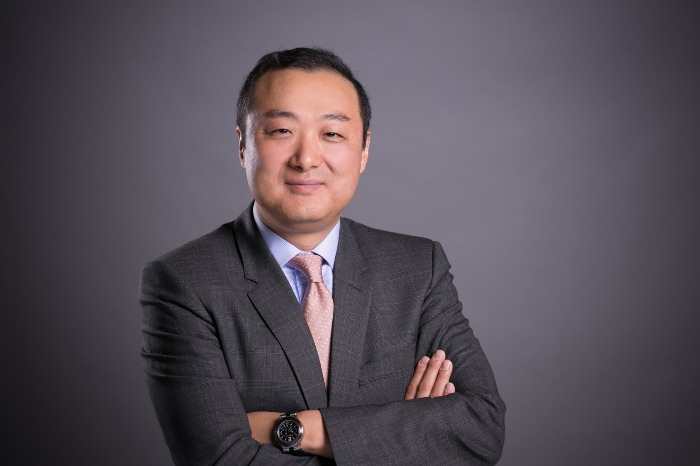[CIO interview] New York Life Investments
US may return to low rates after modest inflation
New York Life InvestmentsŌĆÖ Asia head says policymakers remain committed to not derailing economic recovery
By Aug 20, 2021 (Gmt+09:00)
3
Min read
Most Read
Samsung shifts to emergency mode with 6-day work week for executives


CJ CheilJedang to sell feed, livestock unit for $1.4 bn


Samsung Electronics' key M&A man returns; big deals in the offing


Affinity to buy SK Rent-a-Car at $572 mn, more deals expected


Keppel REIT to sell Seoul-based prime office T Tower



The rising inflationary risk in the US, fueled by strong recovery from the pandemic-induced slowdown, is likely to be short-lived and modest, and investors may need to brace for the return to a longer period of the lower growth environment, said new Asia head of New York Life Investments. ┬Ā┬Ā┬Ā
Starting this year, a steady increase in global vaccination and policy support have contributed to the broad-based rise in consumer demand and corporate earnings, improving the economic backdrop for investing. A raft of upbeat economic data may send long-term bond yields higher in the near term.
But with the spread of the highly contagious Delta variant of COVID-19, policymakers remain committed to not derailing the economic recovery, said Jae Yoon, the US asset management firmŌĆÖs chief investment officer. He was also appointed as chairman of its Asian operations in April of this year.
ŌĆ£Cyclical reflation has more room to run ŌĆ” We expect policy communication to remain clear and interest rates to remain low," he told The Korea Economic Daily in a recent interview following his appointment.
On the fiscal front, he said that US legislators are considering additional fiscal stimulus measures through infrastructure spending which, albeit smaller in impact relative to pandemic stimulus packages, are still important for extending the economic cycle.
With over $600 billion in assets under management as of the end of June, New York Life Investments is the asset management arm of New York Life Insurance Co.
ŌĆ£We are unlikely to face a permanently higher inflation and interest regime. At some point, investors will have to come to terms with a likely return to the lower growth environment,ŌĆØ he noted.
In addition, structural disinflationary forces such as demographics, globalization and technology should regain their dominance once pandemic-related disruptions fade. Supply constraints are already starting to ease, fiscal stimulus will soon fade, and pent-up demand is not open-ended.
"We expect (the US) inflation to remain above 3% through 2021, but to settle between 2% to 3% in 2022," Yoon said.
LOWER FOR LONGER FUTURE
He noted that the so-called ŌĆ£easyŌĆØ part of the economic cycle, where broad-based gains across industries have raised risk asset prices, may now be over as the low base effects will likely fade into next year, and supply and demand imbalances are easing.
During the easy part of the cycle, lower costs of goods and recovering sales lifted operating margins and low interest rates elevated free cash flow as well.
Yoon advised that investors assess the impact of the recent surge in new COVID-19 cases on economic growth, inflation, interest rates and other drivers of asset class performance, adding that the health risk would contribute to a significant relapse for the global economy.
ŌĆ£Slower growth may also contribute to an extension of the lower for longer rate environment in many developed markets. ŌĆ” Substantial growth slowdowns could raise the prospect for further monetary and fiscal stimulus in some countries.ŌĆØ
Under the current investment environment, Yoon advised investors to be selective and stressed the importance of identifying company characteristics, such as pricing power, credit evaluation, and business model drivers.┬Ā
ŌĆ£A rising tide is no longer likely to raise all boats. Instead, investors may want to look closely at the investment strategies and even individual securities that can navigate these complex changes.ŌĆØ
FIXED-INCOME STRATEGIES
Regarding fixed-income sectors, investors need to balance the hot, volatile, near-term environment with a likely lower-return, long-term future, the CIO said.
In public markets, that means a tactical allocation to themes that benefit from an improving economic backdrop ŌĆö value and cyclical sectors, infrastructure investments, and bond strategies that can leverage interest rate volatility and global opportunity.
In private markets, it is essential to work with seasoned managers who have experience across multiple cycles and can leverage multiple levers of value creation ŌĆö operational expertise, pricing power, and deal access, he added.
Write to Yeonhee Kim at yhkim@hankyung.com
More to Read
-

-

-
 Private equityPrivate markets open to more high-net-worth individuals: Hamilton Lane
Private equityPrivate markets open to more high-net-worth individuals: Hamilton LaneApr 16, 2024 (Gmt+09:00)
-
 InfrastructureInfrastructure secondaries continue to rise amid inflation: Stafford
InfrastructureInfrastructure secondaries continue to rise amid inflation: StaffordApr 09, 2024 (Gmt+09:00)
-
 Private equityCarlyleŌĆÖs Rubenstein sees commercial real estate undervalued
Private equityCarlyleŌĆÖs Rubenstein sees commercial real estate undervaluedApr 08, 2024 (Gmt+09:00)
Comment 0
LOG IN


